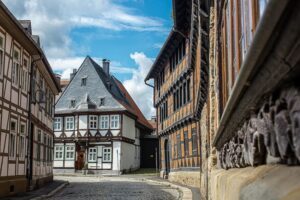
Every brick, beam, and stone has a story to tell — sometimes buried for centuries beneath layers of plaster and paint. When archaeologists and restoration experts come together, these silent witnesses of history begin to whisper again. Across the world, historic property restorations are not merely about preserving architecture; they are about reviving the memories, technologies, and traditions that shaped our collective past.
The Meeting Point of Archaeology and Architecture
At first glance, archaeology and property restoration may appear to belong to separate worlds. Archaeologists dig into the ground to uncover relics of lost civilizations, while restorers rebuild what has been damaged or neglected. Yet, both disciplines share the same goal — to preserve and interpret the human story embedded within structures and landscapes.
When restorers open up the walls of an old mansion or repair the flooring of a centuries-old church, they often encounter hidden layers of the past. From ancient pottery shards beneath foundations to forgotten murals concealed behind drywall, each discovery deepens our understanding of how people once lived, worked, and worshiped.
For example, in many European cities, restoration projects on old properties have led to the discovery of Roman roads, medieval artifacts, and even entire subterranean rooms. These findings reshape not only our architectural heritage but also our view of urban evolution.
When Restoration Becomes an Excavation
The process of restoring a historical building is often as revealing as an archaeological dig. As craftsmen and conservators peel away layers of decay, they uncover traces of earlier craftsmanship — carvings, tool marks, hidden inscriptions, or evidence of fire and repair.
In England, the restoration of Tudor-era homes has often exposed medieval timber framing beneath later brickwork. Similarly, in Italy, Renaissance-era palazzos have revealed mosaics and frescoes dating back to the Roman Empire.
Such revelations demonstrate that every restoration is, in essence, an excavation of time — peeling back centuries of human occupation and adaptation. The architecture becomes a living document, each layer recording a different chapter in history.
Case Study: The Power of Preservation
One fascinating example is the restoration of the 18th-century Hôtel de la Marine in Paris. While preparing the building for public reopening, conservators discovered original wall paintings and hidden decorative motifs that had been covered for over 200 years.
These discoveries not only enhanced the building’s authenticity but also guided decisions about color schemes, materials, and furniture restoration. Instead of guessing what the space looked like, experts could now rely on tangible evidence — the whispers of the walls themselves.
In the United States, similar cases abound. The restoration of historic homes in cities like Boston, Charleston, and New Orleans frequently reveals hidden staircases, bricked-up fireplaces, and forgotten servant quarters. Archaeologists working alongside restoration specialists ensure that these finds are documented and preserved before construction continues.
Such collaborative projects highlight the importance of interdisciplinary work. Restoration without archaeological insight risks erasing evidence of earlier periods, while archaeology without restoration often leaves sites exposed and vulnerable to decay.
Listening to the Materials
Sometimes the whispers come not from artifacts, but from the materials themselves. The type of mortar used, the shape of nails, or the grain of wood can reveal astonishing details about the era of construction and the people who built it.
For instance, lime-based mortars used in medieval buildings differ significantly from the Portland cement introduced in the 19th century. By analyzing the chemical composition, experts can determine the original construction methods and replicate them faithfully.
This approach is essential to authentic restoration, which aims not just to make buildings look old but to truly respect their historical integrity. Each stone and beam becomes a primary source of information — a physical clue to the builder’s techniques, tools, and resources.
Cultural Memory Hidden in Architecture
Every civilization leaves behind its architectural fingerprints. In India, temple restorations have revealed ancient carvings depicting forgotten rituals. In Egypt, the conservation of mud-brick houses in Thebes has exposed evidence of daily life during the reign of pharaohs. In the American Southwest, Pueblo restorations have unearthed ancestral pottery fragments hidden within walls, perhaps placed there as symbolic offerings.
These findings remind us that architecture is not just about structure — it is about identity. The spaces people build reflect their values, beliefs, and social structures. To restore a building, therefore, is to restore memory itself.
Even the most modest farmhouse may contain traces of cultural continuity — patterns of repair, reuse of older materials, or secret symbols etched into wood for protection. Every restoration project becomes an act of rediscovery, revealing how human beings across ages adapted to changing needs while preserving traditions.
Modern Technology in Historical Restoration
Today, modern science has amplified our ability to hear the whispers of ancient walls. Techniques like ground-penetrating radar (GPR), 3D laser scanning, and infrared thermography allow specialists to see inside walls without damaging them. These tools can detect voids, hidden rooms, and structural weaknesses — even remnants of previous buildings beneath current foundations.
Digital reconstruction tools can simulate how ancient properties once looked, helping restorers plan accurate interventions. In some cases, virtual reality models allow historians and architects to “walk through” past versions of a building to better understand its evolution.
This blend of technology and tradition defines the future of both archaeology and property restoration. It enables a deeper respect for authenticity while preventing unnecessary destruction of original materials.
The Role of Skilled Craftsmanship
While technology provides insights, the heart of restoration still lies in human craftsmanship. The hands of stonemasons, carpenters, and artisans breathe life into dormant structures. Their expertise connects the past and present — using traditional tools and methods to repair what time has worn away.
A number of specialized companies around the world focus on this blend of archaeology-informed restoration and artisan skill. For instance, Price Brothers restoration has earned recognition for combining historic building preservation with structural expertise, ensuring that restoration efforts maintain the spirit and authenticity of original designs while meeting modern safety standards.
Such organizations demonstrate how restoration can go beyond aesthetics — becoming a moral commitment to safeguarding heritage.
Ethics and Challenges in Restoring the Past
Restoring historical properties presents ethical dilemmas. Should a building be returned to its original state, or should restorers preserve evidence of all its historical phases? For example, a medieval castle may contain Renaissance modifications and Victorian additions. Which era should take precedence?
Most modern conservationists advocate for the principle of minimal intervention — doing only what is necessary to stabilize and conserve, not to recreate or alter. This approach ensures that the building remains a genuine record of its journey through time.
Moreover, funding and resources are constant challenges. Many heritage sites remain at risk due to neglect or urban development. Public awareness and government policies play crucial roles in ensuring that restoration projects receive the attention they deserve.
Learning from the Whispers
The beauty of property restoration guided by archaeology lies in the stories it reveals. Beneath every coat of paint may lie evidence of a different century. Behind every cracked wall may rest a clue to forgotten craftsmanship.
When we restore old properties, we do not simply rebuild walls — we rebuild connections to our ancestors. We learn about their ingenuity, their resilience, and their relationship with the environment. Every restoration project thus becomes an archaeological dialogue between the living and the dead, between today’s architects and yesterday’s builders.
Building the Future with the Past
“When Walls Whisper” is more than a poetic metaphor — it is an invitation to listen. Each restoration project offers a chance to rediscover what time tried to conceal. When archaeologists and restorers collaborate, they bridge centuries of human history, ensuring that the past remains a tangible part of our shared present.
As cities evolve and old structures face the pressures of modernization, our responsibility grows. By integrating archaeology into restoration, we not only preserve buildings — we preserve the soul of civilization.
The whispers of the walls remind us that history is never silent; it speaks softly through the stones, waiting for someone to listen.
__________________________
Cover Image, Top Left: oljamu, Pixabay


